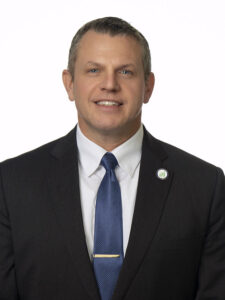
Jason E. Glass
Across the state last school year, almost 21,000 of our public school students experienced some type of homelessness or housing instability.
When adults think of homelessness, we typically think of people living outdoors with no type of shelter. Our students can be living in motels, staying on a friend’s couch, living in a car or in a shelter, as well as being what is traditionally thought of as homeless. The McKinney-Vento Homeless Assistance Act – a federal law that funds educational programs for homeless students – defines homeless children and youth as individuals who lack a fixed, regular and adequate nighttime residence.
November is National Homeless Youth Awareness Month and I think this year more than most, we need to focus on what we can do to help these students and their families. Many families in western and eastern Kentucky have faced housing challenges due to natural disasters in the past 12 months. We have heard from our superintendents in western Kentucky that almost one year after tornadoes tore through the area last December, homes are finally being rebuilt for families with students. And in eastern Kentucky, where flooding destroyed both homes and schools in June, there are many families who are still living at state parks while looking for permanent housing.
Homelessness or housing instability can have a tremendous impact on a student’s learning. It is hard to concentrate on classwork when you are wondering where you will be sleeping that night. Students experiencing some form of homelessness are more likely to be chronically absent and have layers of adversity and trauma that affect their ability to learn and succeed academically and socially.
One need that must not be overlooked is the social and emotional health of these students. First of all, we must think about engaging the whole family, not just the student. Some of the counselors in Kentucky are going to hotels to check on families who have been displaced. When families feel a sense of belonging at a school, so do their students.
Coming into the holiday season, students without a permanent address can face additional challenges and we must be empathetic with projects and our wording. Asking our younger students to draw a picture of their house or their family can be painful. We must be mindful of the language and assignments we are using to make sure we aren’t excluding students.
And finally, we can all find ways to be involved with our Family Resource and Youth Service Centers (FRYSCs). Unique to Kentucky, FRYSCs have been charged with removing non-academic barriers to student learning for decades. They serve as a crucial resource for our students and families, helping connect some of Kentucky’s most vulnerable families to the goods and services they need to keep their students in school and learning.
If you are a community member, reach out to the FRYSCs in your community and see how you can help. These centers often use community resources such as church groups or civic clubs to help provide food, clothing and presents for the holidays.
If you are an educator or administrator, please think about how you are trying to find your vulnerable families and how you get them registered for services. Many families feel like they don’t qualify for assistance or are reluctant to reach out for help when they need it. Helping break down the stigma that can be associated with homelessness or housing instability can go a long way toward ensuring more of our students have a brighter future to look forward to.
If you are interested in learning more about homeless youth, check out these resources:
- National Child Traumatic Stress Network: National Homeless Youth Awareness Month
- National Network for Youth: Youth Homelessness
- Substance Abuse and Mental Health Services Administration: Youth Homelessness Resources
- Collaborative for Academic, Social and Emotional Learning: Strategies for Establishing School-Family Partnerships in Support of SEL
- Early Childhood Learning and Knowledge Center: Supporting Children and Families Experiencing Homelessness
- Wisconsin Department of Public Instruction: How Teachers Can Help Students Who Are Homeless



Leave A Comment